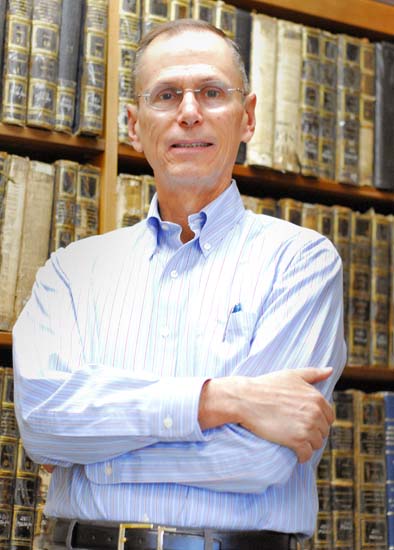UCLA professors respond to Crusades murals

Professor Patrick Geary, who specializes in medieval history, believes that the Crusade murals discovered last week in Syria have a Judgment Day theme, which he says is not uncommon for its time period.
By Samantha Masunaga
Oct. 22, 2009 10:53 p.m.
An isolated castle on a hill in Syria became the center of attention last week after two Crusade-era murals were found in a chapel on the grounds.
Archaeologists said the murals depict heaven and hell, with one panel detailing a wheel that traps prisoners inside while torturing them with knives, and the other showing saints surrounded by light.
However, images of the paintings have not yet been released to the public, probably because of the condition of the findings.
“It could take some time to clean up,” said Sharon Gerstel, a professor of art history who specializes in Byzantine art and archeology.
She added that the cleansing process could take years, although the exact time is dependent on manpower.
In spite of the lack of visuals, news reports have touted the recent discovery as a rare find, saying that the paintings could increase knowledge of the Crusades era, based on what the panels depict.
However, history Professor Patrick Geary said this distinction is actually dependent on the identity of the artist.
“I don’t know that this will revolutionize the study of the Crusades,” he said.
Geary said Crusade art has been seen as a type of religious undertaking for the multiethnic society that lived in the area, which included Greek Orthodox and Armenians.
As a result, this art form is a synthesis of the Eastern and Western styles.
However, with the introduction of Western culture into the region, Geary said that the painter of the murals could easily have been European.
“These crusaders tried to import Western European culture into this region, and they would have brought Western artists,” he said. “If it is an Italian painter, they will be important works, but in terms of the multicultural world of the Latin kingdom, it will not be quite as exciting.”
He also emphasized that the subject of the paintings is not completely unique because Judgment Day artwork, how Geary imagines the representation of heaven and hell, was not uncommon during this time period.
“The image of judgment was very important,” Geary said. “It’s an obvious kind of dichotomy and a standard kind of depiction.”
Although Gerstel agreed with Geary’s statement that the final judgment was a common theme in artwork of this time period, she emphasized that the subject was more common in sculpture and in discrete areas of buildings, not as much in paintings.
“The 12th century was when you just start to get (this) representation,” she said, adding that the difference between sinners and the saved was a common theme in sermons and texts.
She also commented on the specific details of the panels, specifically the panel depicting the torture device.
“It could be an interesting political satire of contemporary events,” Gerstel said, adding that enemies were shown as the ones who are punished, and the crusaders were depicted as part of the saved.
However, she emphasized that this is but one aspect of Crusade art, because there are “bits and pieces” of evidence across the world.
“It’s an art of conquest,” she said. “It gives a look into world history.”


